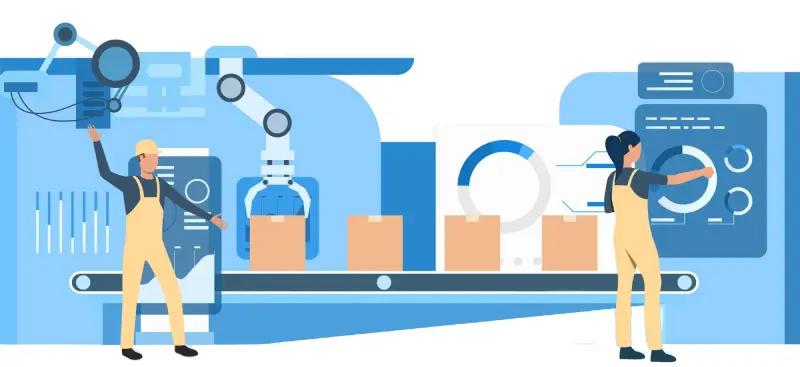
A Variable Frequency Drive (VFD) controls the speed and torque of an AC motor by changing the voltage and frequency of the input supply. The major parts of VFD drive are - inverter, rectifier, and a control system.
VFDs are widely used in applications like fans, compressors, pumps and this accounts for the majority of their use globally. They increase energy efficiency, improve system performance, minimize wear and tear, and integrate networking and diagnostic capabilities for better control performance.
When a 3-phase supply is applied to an induction motor, it creates a rotating magnetic field. The speed of this rotating magnetic field will depend on the supply frequency and the number of poles in the motor. However, if the frequency is reduced without adjusting the voltage, the motor may draw excessive current and overheat. The VFD prevents this by managing voltage and frequency.
VFD contains converter, filter, and inverter. The converter converts the incoming AC power into DC and is filtered and stored for future use. The inverter changes the DC power back into AC with variable frequency and voltage using transistors. The transistors rapidly switch DC power on and off, thus creating an AC waveform. The duration and timing of these switches determine the output voltage and frequency. The VFD varies the voltage by adjusting the duty cycle ( ie. how long the transistors stay on versus off ), and it controls the frequency by switching the transistors in a specific pattern.
Voltage source inverter drive converts a constant voltage into a variable voltage and variable frequency output through a process called inversion. The VSI converts DC into AC with appropriate voltage and frequency. This is important as the speed of an AC motor depends on the frequency of the power supply.
The working of VSI drive relies on three components: rectifier, DC link, and inverter. The rectifier converts incoming AC supply into DC and is stored in the DC link. The inverter will change this DC back into AC at the required frequency and voltage.
Current source inverter drives are designed with a focus on maintaining constant current. In CSI drives, the process starts by changing AC power into DC, while maintaining current constant. This current is then converted back into AC with required voltage and frequency to control the motor speed. The main components are a rectifier, an inductor in the DC link to sustain current, and an inverter. CSI drive can provide good control even under variable load conditions, making it a good choice for heavy duty industrial tasks.
PWM controls the speed of a motor through pulse width modulation, where power to the motor is rapidly turning on and off. The amount of energy to the motor is controlled by adjusting the on/off duration. Pulse width modulation allows precise control of speed as well as torque. The waveform produced by the rapid switching can be fine tuned to provide exact voltage and frequency needed, ensuring smooth and accurate performance of the motor.
Multilevel inverter drives produce high quality voltage waves using multiple voltage levels. These drives combine multiple power cells or inverters, each contributing a specific voltage level. This produces a waveform which has reduced harmonic distortion. This output, which is smoother than that of traditional inverters, minimizes stress on motor windings and bearings and improves the motor’s lifespan.
DTC drives control torque and speed of an AC motor directly, eliminating the need for feedback devices. DTC drives quickly and accurately determine the motor’s torque and magnetic flux conditions by continuously analysing the voltage and current. Using this data, the drive maintains the required speed and torque by adjusting the motor's voltage and frequency in real time. This ensures highly responsive and precise motor control.
Cognidel is a leading institute offering job oriented industrial automation courses in Bangalore, covering topics such as PLC programming, SCADA systems, robotics, instrumentation, and process automation. Our state-of-the-art labs, seasoned faculties, and industry-oriented projects ensure students acquire hands-on skills and are job-ready from day one. High placement percentages and good industry ties of the institute have made Cognidel a prime choice among aspiring automation professionals.